Dentists advise to brush your teeth after each meal. This reminder is necessary from a young age since 9 out of 10 adults have cavities and nearly 1 out of 2 English people suffer from sensitive teeth. For healthy and painless teeth, use Sensodyne Protection Complète Action Sensibilité 24h. It fights cavities, tartar and dental plaque while relieving sensitive teeth.
Here is our commitment, to make sure that we provide the best user experience and content quality:
You can support us by using our links to make your purchases (at no extra cost to you)! This sometimes earns us a commission which allows us to remain independent. More about us
Our selection
"Sensodyne Complete Protection Sensitivity Action 24h is recommended by many dentists. It fights and prevents cavities, tartar and plaque. Suitable for both adults and children,…"
"There is no such thing as the perfect toothpaste, especially for children. But the formula of Signal Kids 3-6 years strawberry flavor relieves sensitive teeth…"
"Elmex Sensitive fights chronic and occasional tooth sensitivity. With its long-lasting olafluorine formula, you can eat and drink whatever you like. Plus, it tastes especially…"
"For fresh breath, nothing beats this toothpaste. In addition, it fights bleeding gums and dental plaque. Despite the slightly salty taste, it effectively keeps your…"
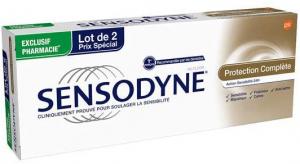
Sensodyne Complete Protection Sensitivity Action 24h is recommended by many dentists. It fights and prevents cavities, tartar and plaque. Suitable for both adults and children, this toothpaste is an excellent choice.
See priceSensodyne is a brand frequently recommended by dentists. It's no wonder that Sensodyne's Action Sensitivity is at the top of this list. This toothpaste offers 24-hour protection. The all-in-one product fightscavities, plaque and tartar. It is suitable for both adults and children over 12 years of age.
The fresh taste of this toothpaste provides a feeling of freshness. Moreover, the action is almost not abrasive. The fluoride and potassium nitrate formulaprevents acid attacks while relieving tooth sensitivity. The set of 2 x 75 mL tubes is quite expensive, but its use can only be beneficial for your teeth.
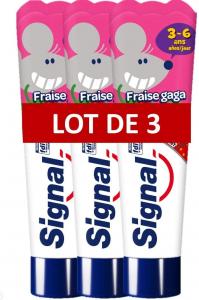
There is no such thing as the perfect toothpaste, especially for children. But the formula of Signal Kids 3-6 years strawberry flavor relieves sensitive teeth and gums. In addition, the paste preserves tooth enamel and its gel texture does not attack the teeth. A very good deal.
See priceSignal Kids Strawberry Flavor isdesigned for children. The set of 3 tubes of 50 mL is indicated for 3-6 years. The toothpaste is composed of sorbitol, silica hydrate, PEG-32, sodium lauryl sulfate, cellulose gum, saccharin, fluoride, tocopheryl acetate, calcium gluconate, alcohol, Limonene, CI 73360 and CI 77891. No need to force the dose. The size of the nail of the little finger is enough.
The soft formula will be appropriate perfectly for the sensitive teeth and respects the enamel of the teeth. The fluoride dosage has been specially adapted for children. Ideally, the brushing will be done under the supervision of an adult to avoid that the child swallows the paste. And get up to 15% discount if you subscribe. This also allows you to receive the toothpaste without ordering.
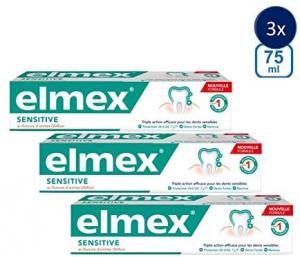
Elmex Sensitive fights chronic and occasional tooth sensitivity. With its long-lasting olafluorine formula, you can eat and drink whatever you like. Plus, it tastes especially good and doesn't make you want to throw up.
3,40 £ on DoctipharmaIf you suffer from sensitive teeth, try Elmex Sensitive 75 mL. This 3-pack of tubes has a triple action formula. The amine fluoride forms a long-lasting protective layer around exposed tooth necks and continuously strengthens teeth. The toothpaste tastes great and does not make you want to vomit like some toothpastes.
In addition to tooth sensitivity, Elmex Sensitive protects against caries. Its fine particles ensure an effective and soft cleaning to remove the dental plaque. Note that 60 Millions de consommateurs recommends this toothpaste, especially for its olafluor which acts on the duration. For more effectiveness, you can leave it on without rinsing your mouth.

For fresh breath, nothing beats this toothpaste. In addition, it fights bleeding gums and dental plaque. Despite the slightly salty taste, it effectively keeps your teeth white.
3,92 £ on AmazonThe Parodontax Whitening pack is composed of 2 tubes of 75 mL. Its daily use gently removes stains from the teeth, stops and prevents bleeding gums. The toothpaste keeps teeth and gums healthy, for adults but also for children over 12 years. The formula contains 1400 ppm of fluoride, sodium bicarbonate and a blend of natural plant extracts.
But the main asset of Parodontax blancheur is thefresh breath it provides. It offers an unparalleled feeling of cleanliness. In addition, it fights plaque 4 times more effectively than a toothpaste without bicarbonate. It has a salty taste that makes users uncomfortable but with its effectiveness, you will get used to it over time.
Any specific needs?
Your guide :
Rate this buying guide :By rating this buying guide, you are helping us to reward our best writers. Thank you!
| TOP OF THE TOP | CHEAP | TOP OF THE LINE | VERY GOOD | |

In accordance with our commitment, this buying guide does not contain any sponsored products. |
 8/10 |
 8/10 |
 8/10 |
 7/10 |
| OUR SELECTION |
Sensodyne Complete Protection Action Sensitivity 24h
|
Signal Kids 3-6 years strawberry flavor
|
Elmex Sensitive 75 mL
|
Parodontax Fraîcheur Intense
|
|
Sensodyne Complete Protection Sensitivity Action 24h is recommended by many dentists. It fights and prevents cavities, tartar and plaque. Suitable for both adults and children, this toothpaste is an excellent choice.
|
There is no such thing as the perfect toothpaste, especially for children. But the formula of Signal Kids 3-6 years strawberry flavor relieves sensitive teeth and gums. In addition, the paste preserves tooth enamel and its gel texture does not attack the teeth. A very good deal.
|
Elmex Sensitive fights chronic and occasional tooth sensitivity. With its long-lasting olafluorine formula, you can eat and drink whatever you like. Plus, it tastes especially good and doesn't make you want to throw up.
|
For fresh breath, nothing beats this toothpaste. In addition, it fights bleeding gums and dental plaque. Despite the slightly salty taste, it effectively keeps your teeth white.
|
|
|
|
All-in-one formula: protects, cleans and strengthens
|
For children 3 to 6 years old
|
Long-lasting and effective action against cavities and plaque
|
Gives you incredibly fresh breath
|
|
|
Fights cavities and tooth sensitivity
|
Non-aggressive formula that respects children's sensitivity
|
Perfect for relieving sensitive teeth
|
Keeps teeth permanently white after scaling
|
|
|
Non-abrasive formula and indicated for ages 12 and up
|
Very good strawberry taste
|
Very good taste and does not make you want to vomit
|
Prevents and fights bleeding gums
|
Help us improve this table:
Report an error, request the addition of a feature to the table, or suggest another product. Thank you for your kindness!
We spend thousands of hours each year studying the major specialized websites, analyzing products of hundreds of brands and reading user feedback to advise you on the best products.
We are a product review company with a single mission: to simplify your buying decisions. Our research and testing helps millions of people every year find the best products for their personal needs and budget.
To support us you can: use our links to make your purchases (which often earns us a small commission), share our articles on social networks, or recommend our site on your blog. Thanks in advance for your support!
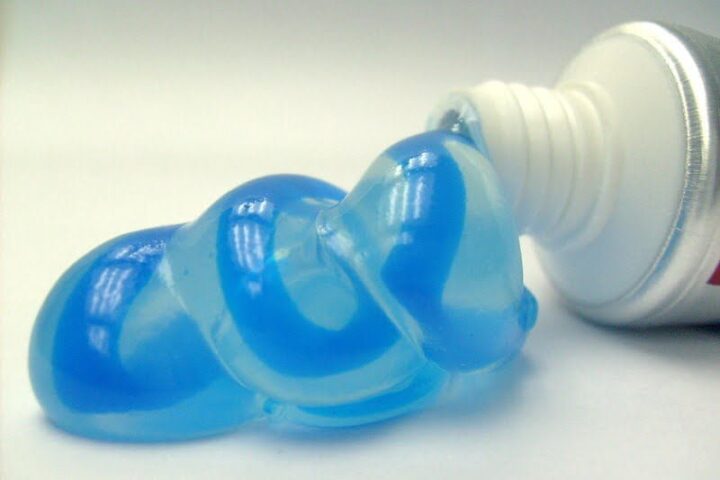
To fight cavities, brush your teeth with a fluoride toothpaste. The effectiveness increases with the content, up to 2,500 ppm. Note that most toothpastes have a fluoride content of 1,000 to 1,500 ppm on the package, often expressed in milligrams per gram of paste. Be aware, however, that the fluoride content is for adults, not for children. Excessive fluoride is detrimental to the mineralization of the teeth. This can lead to the appearance of small stains called dental fluorosis. It is better to use a special toothpaste for children up to 6 years old. Note that organic toothpastes do not have fluoride.
The choice of toothpaste will also vary according to the age of the individual. Indeed, a child will not use the same toothpaste as an adult. A child's teeth will need a product that strengthens them and is harmless to their health. While the second will choose a quality toothpaste according to his needs. Generally, these indications are written on the back of the toothpaste. If necessary, ask your dentist for a suggestion of a good toothpaste.
You can read all sorts of claims on the packaging of toothpastes. Anti-caries, anti-scaling, whitening toothpaste, sensitive teeth, bleeding gums...there are claims for everyone. Rely on your experience of use, especially concerning cosmetic toothpastes. If it doesn't work, don't hesitate to change. Another thing, beware of the logos of the French Union for Oral Health or the Federation of International Dentistry (UFSBD or FDI). They are funded by toothpaste manufacturers! Moreover, these organizations are limited to checking fluoride content, abrasiveness and compliance with standards.
It's best to stick with a solid white toothpaste rather than a gel. Most gel formulas contain artificial dyes that can discolor the teeth you are cleaning. Be sure to avoid getting toothpaste on fabrics, as it can stain.
We
will come back to this in more detail in the next section. But you should already know that most toothpastes contain endocrine disruptors. The best known are butylparaben, propylparaben or triclosan. The latter is also an antibacterial to which microbes could become resistant!
Comme évoqué précédemment, la plupart des dentifrices sur le marché renferment des perturbateurs endocriniens. On peut notamment citer le butylparaben, le polyparaben et le tricolsan.
Les dentifrices médicaments ont même fait preuve d'une certaine subtilité. par exemple, le propylparaben a été renommé en p-hydrobenzoate de proxyle et le sodium polyparaben change en p-hydroxybenzoate de proxyle sodique. Voici les principaux composants à risque.
C'est le composant le plus controversé. Également appelé additif E171, le dioxyde de titane fut interdit à partir du 17 mars 2019 dans les denrées alimentaires. Mais l'application commence seulement le 1er janvier 2020 ! Ce composant est régulièrement présent dans les dentifrices sous forme de nanoparticules. Cette taille le rend intéressant pour le blanchiment dentaire, mais interroge sur sa toxicité.
En effet, une étude de l'Institut national de recherche agronomique (INRA) en 2016 laissait entendre que l'ingestion de l'additif E171 sous forme nanoparticulaire était potentiellement dangereux, sans que cela ne soit vérifiable. Mais les industriels n'ont toujours par réussi à rassurer les consommateurs à ce sujet. Sur les emballages de dentifrice, il peut être noté CI 77891.
On retrouve surtout ce composant dans les produits de soin de la peau, les détergents, les détartrants, les produits antibactériens et les antifongiques. Il peut provoquer une antibiorésistance, voire des perturbations endocriniennes. Potentiellement cancérigène, le triclosan est pourtant présent dans la plupart des dentifrices cosmétiques.
Également connu sous le sigle SLS, ce composant donne son épaisseur et son côté moussant au dentifrice. Il est capable d'inhiber les récepteurs du goût sucré et rendre tout amer. Pour preuve, buvez un jus d'orange après vous être brossé les dents. Le goût amer vient de la présence du lauryl sulfate de sodium.
Le pire est qu'il provoque des microlésions sur la peau et les muqueuses et aussi des aphtes. Outre ses propriétés irritantes, le lauryl sulfate de sodium est connu comme un perturbateur endocrinien.
Pour donner son goût sucré à la pâte dentifrice, les industriels utilisent de l'aspartame et de la saccharine. Voir ces composants dans les aliments sans sucre n'a rien de scandaleux. Mais en trouver dans des dentifrices étonne. Ils provoquent notamment des prises de poids, des problèmes neurologiques, des infections, voire des cancers.
Oui, le fluor fait partie des produits controversés ! Longtemps considéré comme le rempart contre les caries dentaires, il peut devenir potentiellement dangereux pour les enfants. Si nos petits anges ne sont pas surveillés, ils risquent d'avaler une grande quantité de dentifrice durant le brossage des dents. L'accumulation de fluor induit des perturbations endocriniennes.
Difficile de croire que certains dentifrices contiennent ce produit. En général, on le retrouve dans les antigels, les peintures, les vernis et les liquides de refroidissement ! Pas besoin d'un doctorat pour savoir que le propylène glycol n'a pas sa place dans notre bouche. Surtout quand on sait qu'il faut des gants et des lunettes en laboratoire pour manipuler ce produit dans sa forme originelle...
Le DEA possède des propriétés moussantes similaires au lauryl sulfate de sodium. Le pire, c'est que les industriels l'utilisent surtout pour le côté esthétique ! Comme tous les produits indésirables présents dans le dentifrice, la diéthanolamine est un perturbateur endocrinien. Son absorption par la peau peut également provoquer des cancers.
Les microbilles ne sont pas dangereuses pour l'homme, mais pour l'environnement. Ces granules de plastique invisibles à l'œil nu finissent un peu partout dans l'environnement. Ces particules intoxiquent notamment diverses espèces marines.
La décision rendue suspend mais n'interdit pas le dioxyde de titane. La Commission européenne est passée par là. Quant aux experts de l'Anses, ils n'ont pas réussi à statuer clairement sur le danger de ce composant. Pourtant, le risque a bien été identifié par les chercheurs de l'Inra. Et parmi les études récentes, une bonne partie met en évidence des modifications cellulaires, des cas de stress et des anomalies chez les cobayes animaux. Le manque de données globales est surtout dû aux difficultés des recherches sur les nanoparticules de dioxyde de titane. Dans ces conditions, impossible de fixer une dose journalière admissible.
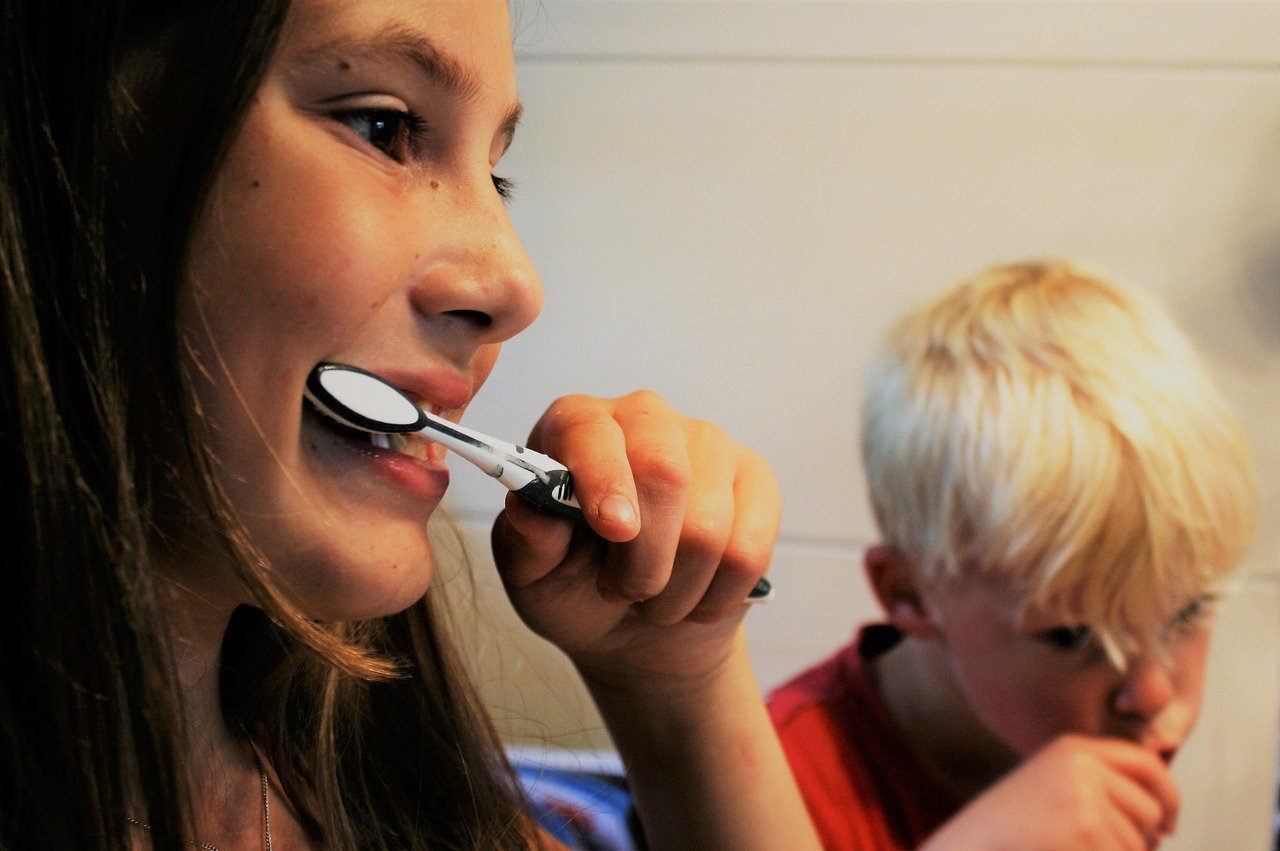
La plupart des marques de dentifrice conseillent sur leur emballage de changer de brosse à dents tous les 3 mois. Dans les faits, les dentistes avancent que ce chiffre n'a aucune base scientifique. C'est purement un argument commercial. Plus vous achetez de brosses à dents, plus les industriels se feront de l'argent !
L'état de la brosse à dents et donc sa durée de vie dépendent surtout de la manière dont vous l'utilisez. Chez certaines personnes, la brosse à dents est hors d'usage au bout de 2 semaines. Pour d'autres, elle reste impeccable au bout de 3 mois. Dans les faits, évitez de brosser trop énergiquement. La durée de vie d'une brosse à dents équivaut à 7 h de brossage.
Le changement de brosse à dents intervient lorsque les poils deviennent ébouriffés, ou à la suite d'une maladie. Une fois le virus passé, mieux vaut en changer. Dans le cas contraire, vous risquez d'installer une culture de bactéries dans la salle de bains. Enfin, brossez-vous les dents 2 fois par jour pour une bonne hygiène buccale. Un brossage par jour a toujours vous obligera à consulter fréquemment chez le dentiste.
Complete protection, anti-bacteria, fresh breath, whiteness, sensitive teeth, bright smile... Toothpaste packaging claims compete with each other in terms of inventiveness. Instead of classifying by claim, the most relevant way is to distinguish the nature and composition of the product.
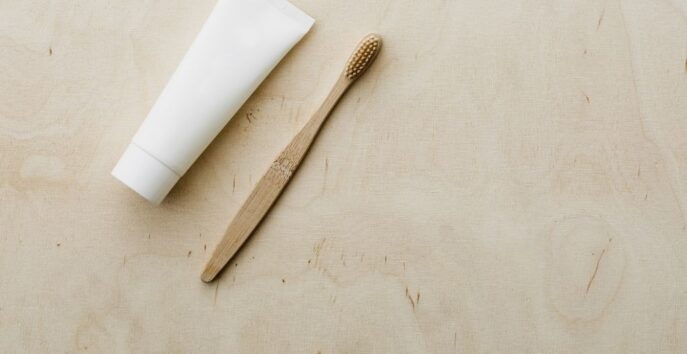
Most toothpastes are for cosmetic use. You can find them in pharmacies, drugstores and supermarkets. We can mention toothpastes against bad breath or those used for teeth whitening
.
In fact, this type of toothpaste just has to comply with the authorized and prohibited ingredients
according to the decree dated February 6, 2001, and guarantee its harmlessness. No need for clinical tests and even less for marketing authorization.
However, cosmetic toothpaste is effective against cavities
because of its sufficient fluoride content. On the other hand, manufacturers do not have to prove the effectiveness of the product but only its correspondence to the commercial claims (whiteness, bright smile, fresh breath...). If not, the Direction of consumption (DGCCRF) will see it as a misleading advertisement.
Advantages:
Disadvantages:
Who is it for?
If you do not suffer from sensitive teeth or bleeding gums, cosmetic toothpaste will do. Free to test the claims to see if it works!

This
type of toothpaste
helps
relieve tooth sensitivity and fights bleeding gums
. It also prevents cavities and fights plaque. And to give fresh breath, medical grade toothpaste is more effective than cosmetic toothpaste.
Toothpaste with the status of a medicine must obtain a marketing authorization
or MAA. The latter is issued on the basis of a file supposed to prove its effectiveness. The claimed pharmacological action must also be proven through clinical trials.
Mostly sold in pharmacies, medical toothpaste is recommended by dentists. Brands such as Elmex, Sensodyne and Parodontax can be mentioned. Finally, the fluoride content exceeds 1,500 ppm, or 150 mg per 100 g of toothpaste.
Advantages :
Disadvantages:
Who is it for?
Do you suffer from teeth that are sensitive to cold and heat? Do you have bleeding gums? Try a medicated toothpaste. In fact, dentists often recommend this type of product to their patients.

Bio
means that the toothpaste is natural. Its components prove to be less aggressive to teeth
than synthetic products. But their effectiveness eradicates cavities in the same way as conventional toothpaste.
The organic toothpaste must not contain any chemical product
, in particular the sodium dodecylsulfate. It must also be certified organic by competent and recognized organizations such as Cosmébio, Nature et Progrès or BDIH. These organizations verify the composition of the toothpaste.
This type of toothpaste does not contain fluoride. But this element is found in sufficient quantities in water and sea products. Finally, organic toothpastes often have natural fruit flavors, which children love. They are also excellent gift ideas for adults.
Advantages:
Disadvantages:
Who is it for?
Organic toothpaste limits the amount of chemicals, which prevents the development of allergic reactions and related diseases. Children are the most concerned, especially because they love to swallow toothpaste. People with allergies should also try it.
Many brands make cosmetic toothpastes as well as medicinal toothpastes, and even organic toothpastes! And these products are often found in the same shelves, including in pharmacies.
An infinite number of cosmetic toothpastes are easily available in the market, whether in supermarkets or drugstores. In fact, most of them have cosmetic properties aimed at tooth whitening and breath freshening.
Intended for people with dental caries problems or bad breath, this type of toothpaste is suitable for all budgets. On the other hand, its use is strongly proscribed for children and adults prone to dental sensitivities or bleeding gums.
People suffering from bleeding gums and tooth sensitivity should turn to medicated toothpastes. Generally recommended by dentists, the effectiveness of this type of toothpaste is clinically proven. They are rarely found on the market, as they require approval to be sold.
Medicated toothpastes are high-end products, which justifies their high price. As the name suggests, they taste more like medicine and this type of toothpaste owes its effectiveness to controversial products.
To have the right toothpaste, it is advisable to first consult your dentist and to make your choice according to the pathologies to be treated. You should also take into account the age of the user. Also pay attention to the components of the product, and prefer toothpastes containing more organic components.
For a 3 year old child, for example, opt for toothpastes without fluoride or medicated toothpastes. For adults, medicated toothpastes are more beneficial than cosmetic toothpastes.
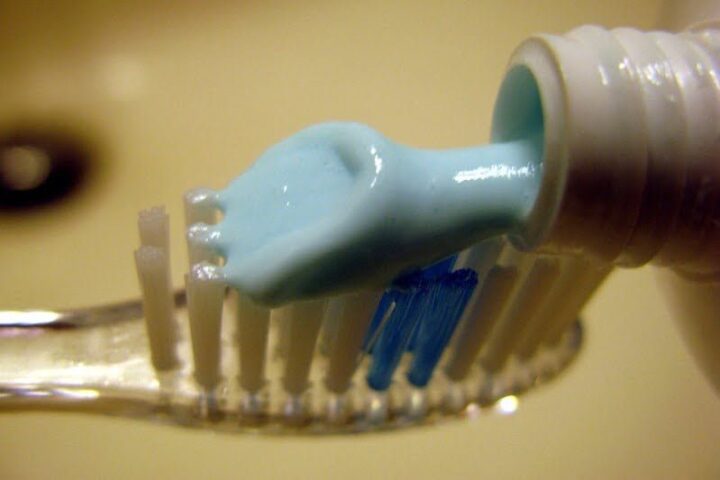
The facts are undeniable. 92% of English people have already had a cavity, 8 out of 10 of them on several occasions. Knowing that toothpaste effectively fights this scourge, its use is common sense. Moreover, brushing your teeth is a daily reflex taught from a very young age.
But before being a care and a routine, to brush the teeth contributes to the daily hygiene of the mouth and the teeth. Indeed, brushing your teeth with a good toothpaste rids your mouth of the various bacteria responsible for dental plaque, bad breath and many other dental diseases.
This reason follows directly from the previous one. In 2016, the French spent 11.1 billion euros on dental care. If 8.2 billion were reimbursed by the Social Security and complementary health, there were still nearly 3 billion euros to be paid by patients!
The use of a good toothpaste is the assurance of having healthy teeth. Thus, you will not have to spend on dental care. On the other hand, the costs of services vary from one dentist to another and also from one villa to another. The differences between the rates are up to 30%. And regular brushing of the teeth avoids extracting the teeth and affecting the entire digestive system.
Toothpaste is sometimes purchased to achieve a specific goal. 44% of English people buy toothpaste in response to a specific risk. Sensitive gums represent 19%, sensitive teeth 9%, fresh breath 8% as well as prevention and fight against cavities. Only 14% of English people do not pay attention to the type of toothpaste they buy.
Although mouthwash is popular with dentists, toothpaste remains a major contributor to fresh breath. Note that some flavors are mint, others are fruit flavored. In addition, there are flavors for other uses such as appetite suppressant or anti-smoking.
20% of English people are affected by this problem. However, halitosis is not only due to poor oral hygiene. In addition to gingivitis, dentures, cavities and periodontitis, bad breath can have different causes. These include a bacteria-laden tongue, stomach acid, liver and tonsil problems, the premenstrual cycle and certain diets,
.
In our opinion, the best brands of toothpastes in 2022 are :
Sensodyne is the toothpaste brand most frequently recommended by dentists. This is no coincidence. Its products for relieving tooth sensitivity and combating bleeding gums are among the top sellers in this segment. Sensodyne toothpastes do not disappoint, whether they provide comprehensive protection or are aimed at a more targeted action.
Part of the American Colgate-Palmolive group, Elmex is one of the leading brands in oral hygiene and health. For more than 50 years, its amine fluoride toothpastes have delighted users in Europe and North America. The brand offers a wide range of products to ensure healthy teeth for everyone.
The Parodontax brand is owned by the British company GSK or GlaxoSmithKline. For your information, the GSK group is one of the world's top 10 pharmaceutical companies. This leaves no room for doubt as to the nature of Parodontax toothpastes. They are particularly recommended against occasional bleeding gums.
Signal was the first fluoride toothpaste brand to be introduced in supermarkets in 1977. To this day, it remains the leading brand on the French market. Recognizable by its red stripes, Signal toothpaste is often used for cosmetic purposes. Bought by the Unilever group, which produces shampoos among other things, Signal is present in more than 48 countries.
Who doesn't know the American brand? Colgate is as well known as Coca-Cola in the world's soft drink market. Half of humanity uses a toothpaste of this brand. In addition, Colgate produces toothbrushes and mouthwashes. Its main focus is on cosmetic toothpaste.
The diagram below will help you to get an idea of the typical prices for each price range (entry-level, mid-range and high-end).
However, more expensive does not necessarily mean better.
We therefore advise you to always consult our ranking before deciding, rather than blindly relying on price ranges.
Brushing your teeth properly takes 2 minutes.
Take at least 2 minutes to brush your teeth. Brush gently and slowly, without using too much force.
Use your toothpaste to get rid of acne.
Toothpaste can help get rid of a pimple. Just apply a little toothpaste to the head of the pimple and let it dry for a few hours. Then rinse it off with water. This may not prevent pimples from appearing, but it helps speed up the healing process. This method is not recommended for people whose acne pimples are a symptom of a more serious skin problem.
Clean your nails with toothpaste.
Are you
tired of highly toxic chemical-based nail polish remover? Toothpaste can work just as well while keeping your nails healthy.
Relieve insect bites.
Toothpaste not only does a great job of relieving itching, it also helps reduce inflammation.
Don't forget baby.
Start
cleaning your baby's gums at birth using water and a soft toothbrush or washcloth. Use a smear (about the size of a grain of rice) of fluoride toothpaste after her first tooth erupts. Get an age-appropriate toothbrush and help your child brush twice a day, after breakfast and before bed.
A
little toothpaste on a damp sponge or cloth will remove soap scum buildup on fiberglass shower doors and enclosures. Rinse with a cloth dipped in clean water and dry to prevent staining.
Use
a little toothpaste on a damp cloth to wipe down mirrors. Work in small circles and let the toothpaste dry. Then polish with a dry cloth.
Whitening toothpastes contain special chemicals and polishing agents that remove stains. They sensitize the teeth and gums and attack the enamel as they are used. In the short term, they are safe for daily use. However, follow the label or your dentist's recommendations.
To take good care of your teeth, brush them twice a day for an average of 2 minutes. Choose a toothpaste that contains fluoride. Brush each corner and nook gently. Brush your teeth in a circular motion and place your toothbrush slightly downwards. Don't forget the connection between the teeth and the gums as well as the tongue. This will help you remove bacteria and keep your breath fresh.
Using too much toothpaste will not increase its action or effectiveness. For an adult, a toothpaste the size of a pea is sufficient. For a child, it should be reduced a little, to the size of a grain of rice. For a child, using too much toothpaste can lead to a risk of fluorosis. This causes white spots to appear on their teeth.
Sometimes a small amount of toothpaste is swallowed when brushing your teeth. Toothpaste should not contain toxic substances. However, the product usually contains fluoride. Swallowing a lot of it every day can lead to intoxication. Just be sure to be careful and supervise children when brushing their teeth.
Cleaning your teeth with chewing toothpaste is easy: just chew the tablet or half of it. It will foam up and spread throughout your mouth. Then brush your teeth as you normally would. Then rinse to remove the product. With these simple steps, your teeth will be clean.
Every month we help more than 1 000 000 people buy better and smarter.
Copyright © 2022 - Made with ♥ by buyingbetter.co.uk
Your reviews and buying guides 0% advertising, 100% independent!